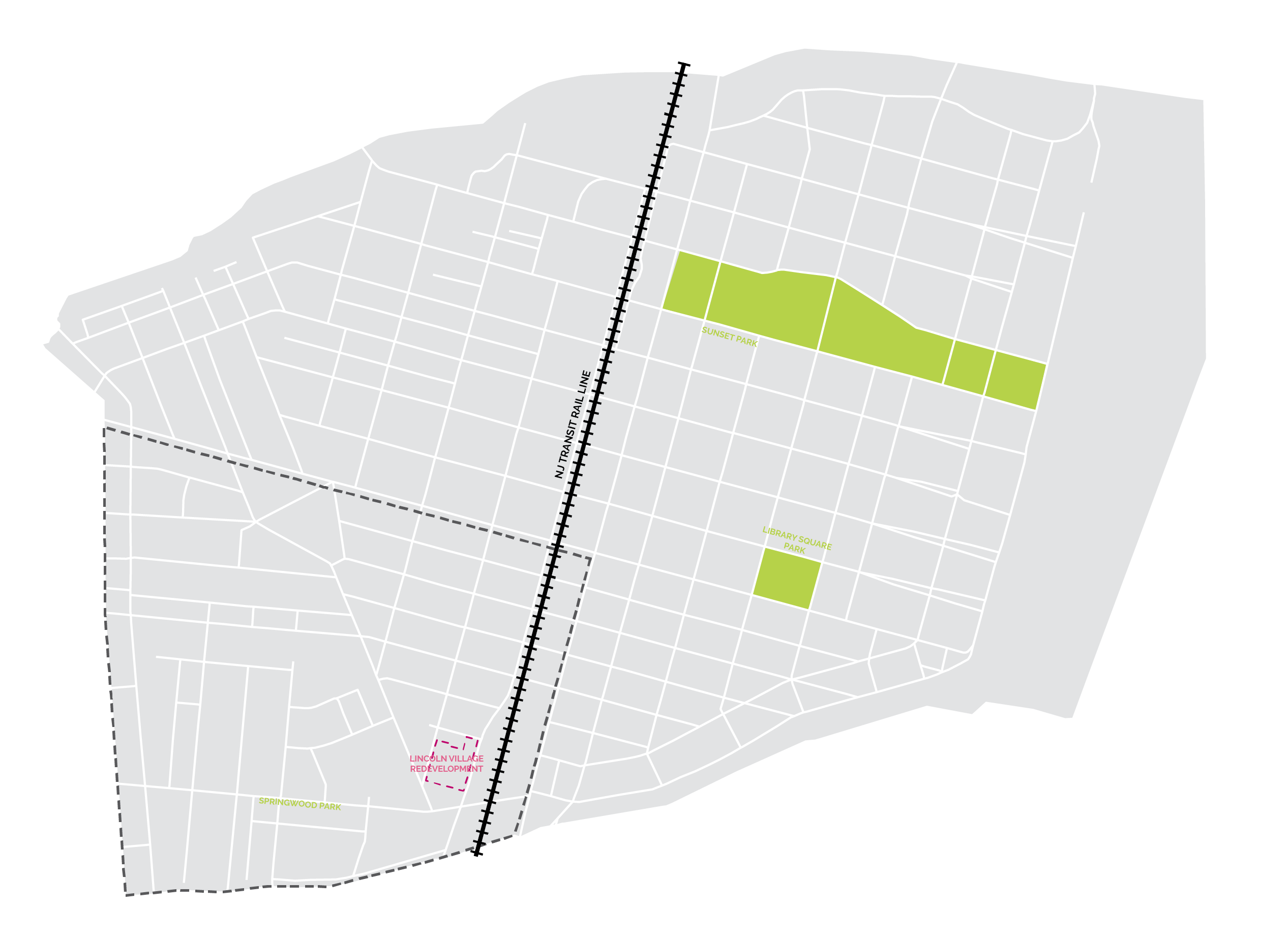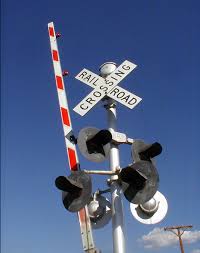Improve pedestrian crossings at railroad tracks and Memorial Avenue with striping and signage
The New Jersey Transit train tracks running north-south through the center of Asbury Park often act as a a barrier between the East and West sides. Improving track crossings will not only improve safety but will also diminish the divide between the two parts of the city.
RAIL LINE BISECTS THE CITY

Data from 2017 Needs Assessment
Physical Barriers
Major concern of Transportation Working Group
“Pedestrian safety at railroad crossings”
Federal Highway Administration “PedSafe”
Abstract
There are a number of ways pedestrian safety can be improved at railroad crossings by selectively using passive and/or active devices. Passive devices include: fencing; channelization; swing gates; pedestrian barriers; pavement markings and texturing; refuge areas; and fixed message signs; raising the approaches to the track and the area between the tracks to the level of the top of the rail creating flat level areas to cross; designing crossings so that the pedestrian paths of travel intersect the railroad track at a 90 degree angle, minimizing problems with the flangeway gap width through design and/or an approved flangeway filler; and widening the crosswalk when a perpendicular crossing cannot be provided so that pedestrians have room to maneuver and position themselves to cross the tracks at a 90 degree angle. Active devices include flashers; audible active warning devices; automated pedestrian gates; pedestrian signals; variable message signs; and blank-out signs. The MUTCD requires the use of railroad crossing “crossbuck” signs whenever railroad tracks intersect a public roadway or pathway.
Evidence-based research was collected by Monmouth University
